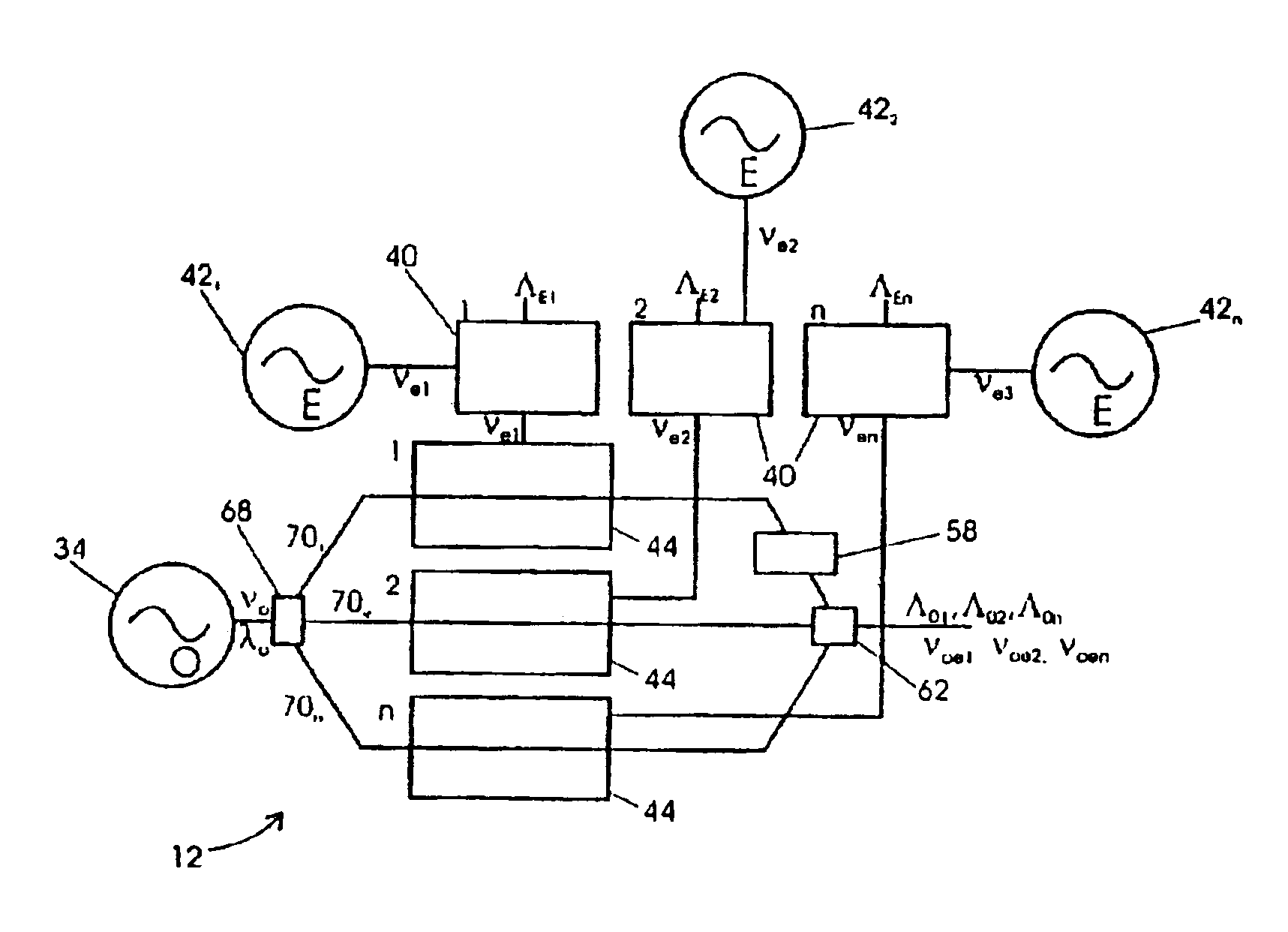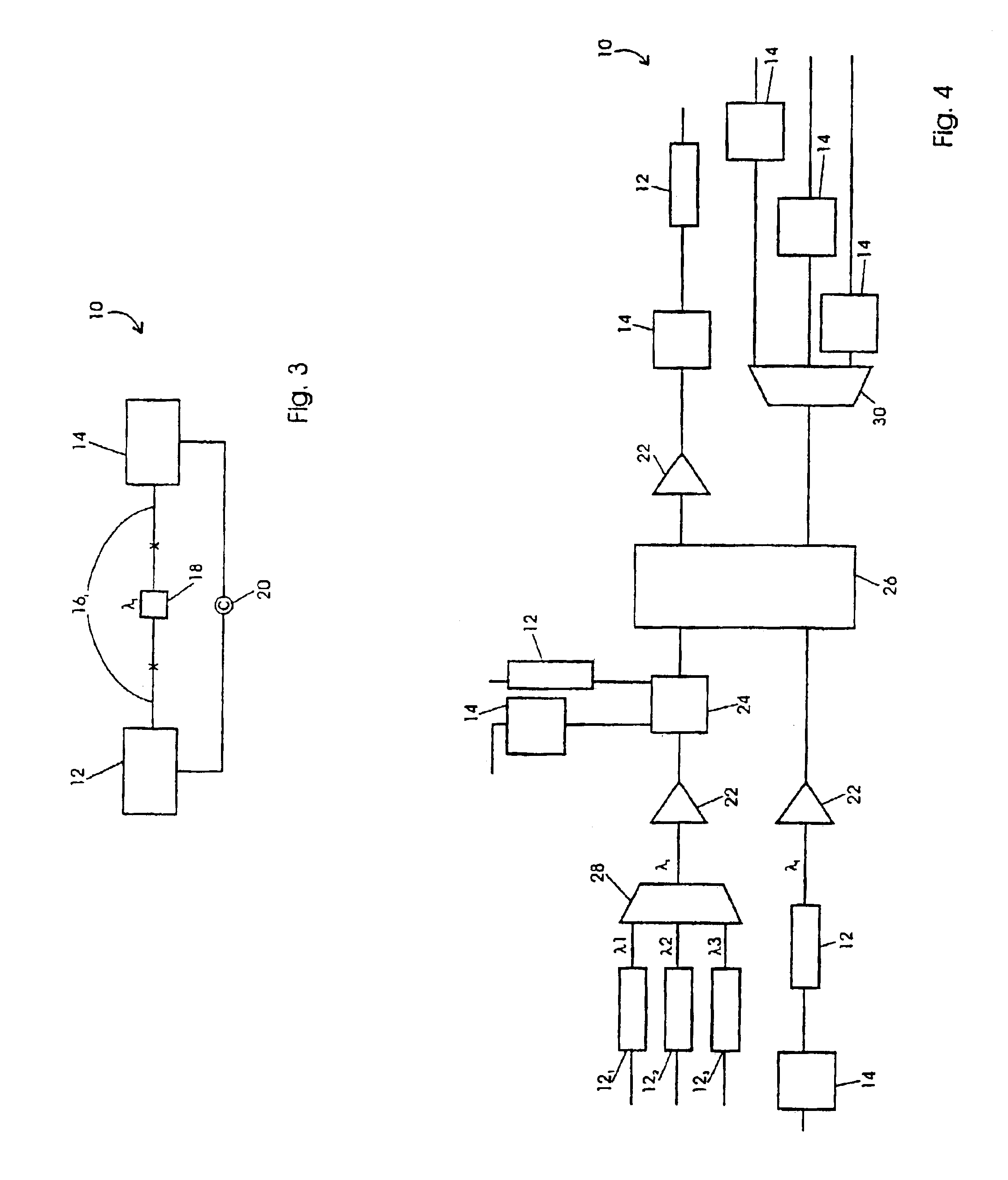Optical transmission apparatuses, methods, and systems
a technology of optical transmission apparatus and optical transmission method, applied in the field of optical transmission apparatus, methods and systems, can solve the problems of limited operation bandwidth of edfas, limited benefit of first option, and inability to detect errors in optical systems
- Summary
- Abstract
- Description
- Claims
- Application Information
AI Technical Summary
Benefits of technology
Problems solved by technology
Method used
Image
Examples
Embodiment Construction
[0038]The operation of optical systems 10 of the present invention will be described generally with reference to the drawings for the purpose of illustrating present embodiments only and not for purposes of limiting the same. As shown in FIG. 3, the system 10 includes an optical transmitter 12 configured to transmit information, i.e., data, etc., via one or more information carrying optical wavelengths λi to an optical receiver 14 through one or more segments of optical fiber 16j. The system 10 may also include one or more dispersion compensating components18 and feedback controllers 20, as well as other optical components such as optical amplifier 22, add / drop devices 24, and the like.
[0039]As shown in FIG. 4, the system 10 can be embodied as a network including a plurality of transmitters 12 and receivers 14 in optical communication through one or more optical switches 26, combiners 28, and / or distributors 30. For example, optical and digital cross connect switches and routers, mu...
PUM
| Property | Measurement | Unit |
|---|---|---|
| wavelength range | aaaaa | aaaaa |
| angle | aaaaa | aaaaa |
| carrier frequency | aaaaa | aaaaa |
Abstract
Description
Claims
Application Information
 Login to View More
Login to View More - R&D
- Intellectual Property
- Life Sciences
- Materials
- Tech Scout
- Unparalleled Data Quality
- Higher Quality Content
- 60% Fewer Hallucinations
Browse by: Latest US Patents, China's latest patents, Technical Efficacy Thesaurus, Application Domain, Technology Topic, Popular Technical Reports.
© 2025 PatSnap. All rights reserved.Legal|Privacy policy|Modern Slavery Act Transparency Statement|Sitemap|About US| Contact US: help@patsnap.com



